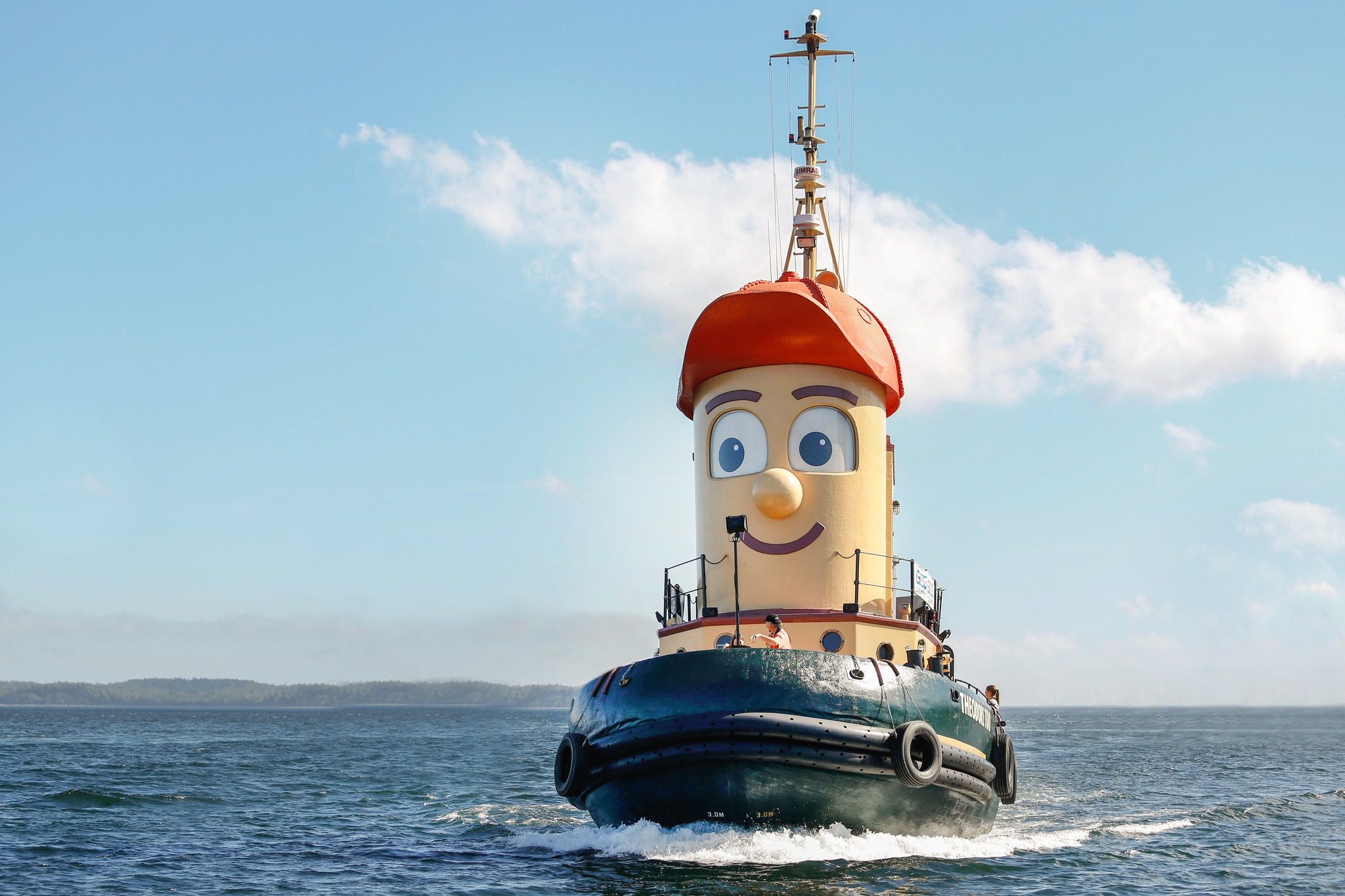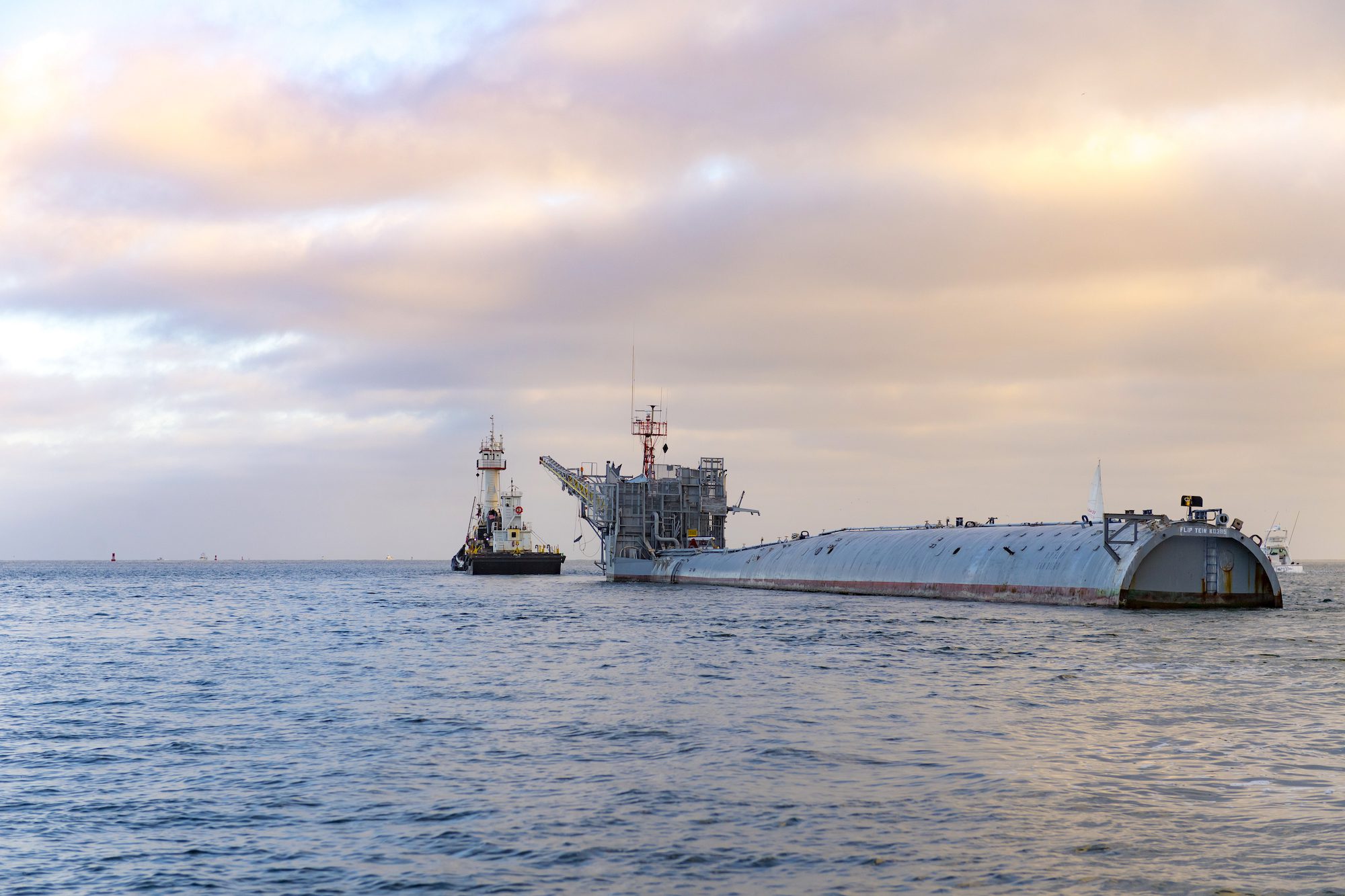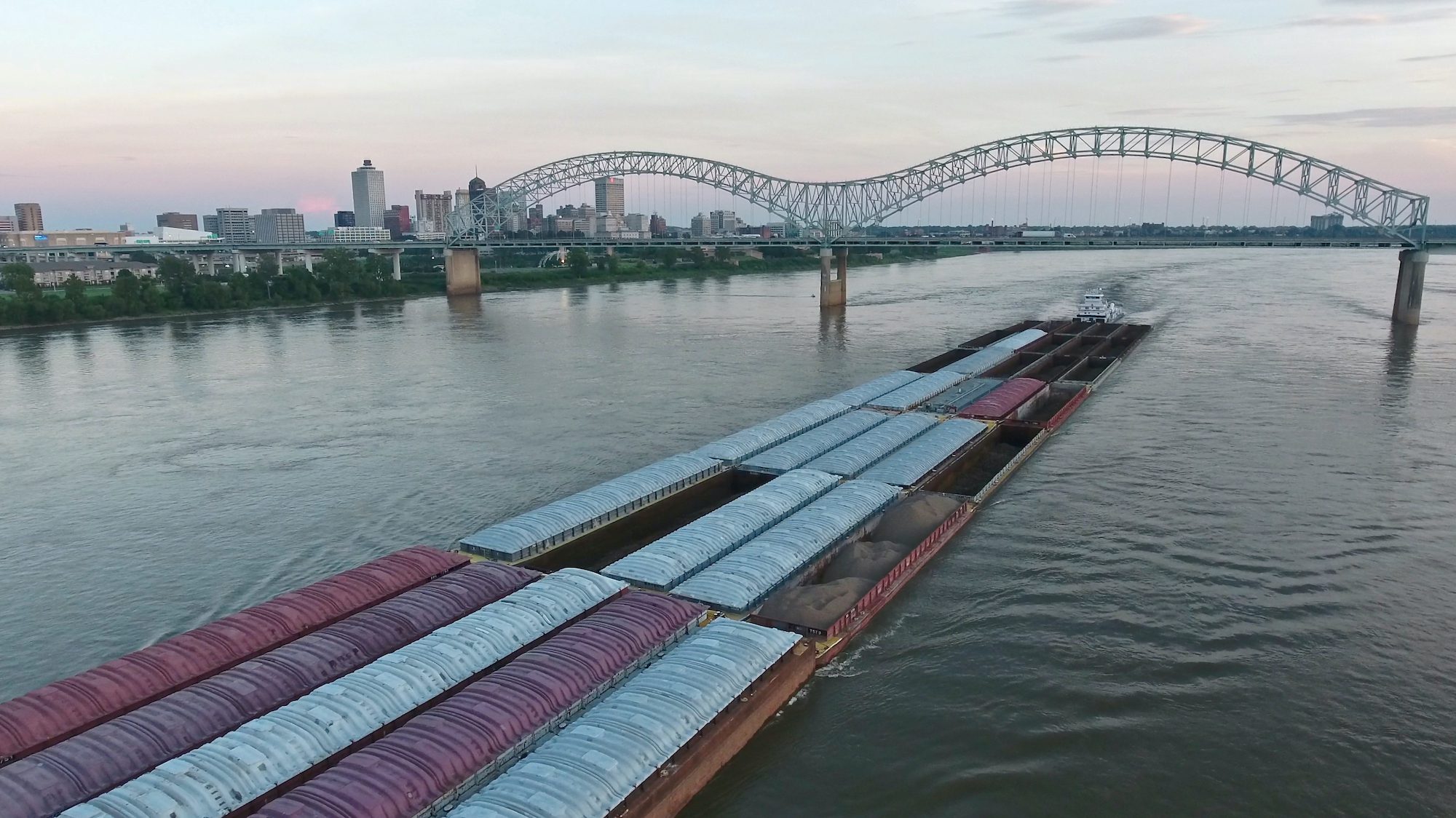Photo: Michael Carr
By CW4 Michael W. Carr (Retired) – “Hey, you guys want to haul some ammo and gear out to San Clemente Island for us?” asked the SEAL officer.
“Sure”, said the Army Warrant Officer, without really thinking about what his agreement might entail. For the Army Marine Warrant almost any reason to get his 174 ft. LCU underway on a mission was a good idea. Underway was always better than sitting tied to the dock.
“Sweet”, the SEAL said. “Here’s what we need you to do,” and he began explaining the process of loading gear and ammo at the Navy Amphibious Base in Coronado CA, and sailing the load to San Clemente Island, 80 miles NW of San Diego off the California coast
It’s the details of an operation that will eat you up; weather, tides, mechanical systems, individual skills, fatigue, unforeseen events. These all combine in unforeseen ways to either magically assist you towards success, or to insidiously produce roadblocks, delays, obstacles & chaos.
Success in maritime operations requires two essentials: an unceasing willingness to adapt and change with conditions, and an equally extensive set of skills and techniques in dealing with challenges. From ship-handling to knot tying a mariner must have a plethora of talents.
Little did the Army Warrant Officer realize how many of these skills would be needed over the next 24 hours.
“So, first you need to come to the ramp here at Coronado, and load our truck and Gators, and then sail over to North Island and load the ammo.” Directed the SEAL. “But you have to do this at night, we don’t do anything during the day,” he added.
“Ahhh…of course,” thought the Warrant. Now come the many niggling details, like spent shell casings ejecting out the side port of an M4 during a firefight. Attention to the details & specifics needed to make this mission work must be addressed.
“Ok, he thought, let’s start writing these issues down.” He took out his green memo book and scribbled “To-Dos”; time of high and low tide at Coronado Island, water depth in the channel, tides at San Clemente Island, distance to sail, forecast weather, in particular wind and seas at San Clemente, estimated time to load ammo and gear, and the list went on….
An Army 1st SGT had once said to the Warrant, “You officers talk way too much, you analyze and discuss and consider every possible option before you even think about making a decision”. Here is what you should do, when you need to get something done, tell your Soldiers “Ruck up, we’re moving out.” That is what I call an OPORDER. That’s all we need to know. We can figure out the rest.
And so that is what the Warrant did. He got his LCU crew together on the mess deck and told them, “We are hauling ammo and gear to San Clemente Island for the SEALs. I’m not sure of all the details, but we are working on it now. Just be ready, and consider this your OPORDER. Ruck up, we are moving out”.
San Diego harbor, and all of the west coast, experience “mixed semi-diurnal” tides. Two highs each day of differing heights, and one low. Tidal range at Coronado Island is around 6 feet, and the depth at low water at the Navy’s ramps is 11 feet. An Army LCU’s draft is 8.5 feet. Tight, but do-able.
But the real issue is the “V” configuration formed when the LCU’s ramp rests on the downward sloping concrete boat ramps at Coronado Island. This is always the concern when using the bow ramp, and the one single issue that is always the greatest concern in loading and offloading, providing a ramp angle which allows vehicles to drive on and off.
You cannot just drop the ramp and assume a “flat” configuration. He could see this was going to be one of those times, as the Navy’s ramps were steep, and the LCU ramp would end up with too steep a downward angle.
“Gather up all the 4 x 4 lumber, plywood and wooden blocks you can scavenge,” he told his leading Bos’n. We will need to fill in the bottom of the “V” so the SEALs can drive on their vehicles.
“I am not going to look like an amateur in front of these SEALs,” the Warrant thought. “We had told them he could do the mission, so we are going to do it”.
Sure enough, when they arrived at the slip soon after midnight and lowered the ramp, a steep “V” was formed. It was impossible to drive down the concrete boat ramp, and then up the LCU ramp without first filling in the bottom of the “V”.
“Take all that dunnage and fill in the “V” so the SEALs can drive on”, he told his deck crew. Into the “V” went 4 x 4s, wooden blocks, and on top went sheets of plywood. Once a bridge was formed, the Gators and a large cargo truck bounced across the wood pile to the sounds of crunching and cracking and onto the LCUs cargo deck. Step one complete.
With much backing and filling, and bow thruster use, the LCU backed out and into the narrow channel. Now, onto the Navy’s North Island ammo loading dock. They arrived at sunrise. Ammo was loaded into the cargo truck and blocked in place. It took workers several hours to properly brace and block the ammo. Once the last box was in place the LCU departed for San Clemente Island. A ship loaded with ammo cannot sit in port, once loaded you must depart.
Next stop Wilson Cove on the NE corner of San Clemente Island. San Clemente belongs to the US Navy, and the only water access point is a pier and ramp at Wilson Cove. Wilson Cove is open to the NE, an unprotected landing location which experiences swells and winds coming in from the east.
Landing at the ramp is dangerous, there are rocks on either side, the ramp is only 20 feet wide, and an LCU’s ramp is 16 ft. wide. Making this, approach and landing seem similar to docking a space ship at the International Space Station. You must do it right the first time.
Not only is the ramp exposed and small but it has a large rubber lip, a bumper, running across its width about 6 feet up from the water’s edge. This lip is designed to hold, or restrain, the leading edge of the LCU ramp. Essentially, you ram the ramp’s top or front edge against the rubber bumper and use forward thrust to hold the LCU in place while it’s cargo is unloaded.
This is a tenuous operation. Swells are pushing you from astern, and winds are always gusty and changing direction. You must constantly adjust throttles, rudder, and bow thruster to hold an LCU in place. If your bow ramp “jumps” over the rubber bumper the entire LCU will run up on the ramp. Not a good event.
This operation is a challenge to execute in daylight, and downright nerve-wracking at night. As they departed San Diego the Warrant computed their ETA to San Clemente as 23:00. Of course, they were going to arrive and offload at night.
Nine hours after rounding Point Loma the LCU arrived off Wilson Cove. It was dark, no moon, and only a few lights adjacent to the ramp. There was no one in sight, no one on the radio.
“Don’t worry about calling, or seeing anyone when you arrive” the SEAL in San Diego had said. “Just pull up to the ramp when you arrive, and they will know you are there, it’s all good”.
“Damn,” the LCU Warrant thought as he made his approach, I hope someone shows up when our ramp hits the rubber bumper, I don’t know how long I can hold us in position. Seas, swells, and wind were pushing the LCU around, and he was constantly adjusting rudder and engines to make a straight, head-on approach.
“Lower the ramp halfway,” he radioed the focsle crew.
“Be ready to immediately fully lower when I get on the concrete”, he added.
Timing was critical. Slowly approach the ramp, maintain sufficient speed to keep steerage, but not too fast. You want the ramp to nudge the rubber bumper, not slam into it and cause it to jam, or jump off its pintles. Slow, sure, even pressure.
“Call out distances” the Warrant radioed the focsle, he could not see well enough in the dark to judge how many more feet they had to go.
“20 feet and closing” came back from the focsle.
“Lower the ramp” the Warrant immediately called back. He would not be able to see the ramp come up against the rubber bumper, but he would be able to feel the LCU stop. At that point, he would increase power to hold them in place.
“Skipper, you are up against the bumper!” came over the radio from the focsle.
“Roger that” he acknowledged. He increased RPMS and put rudders amidships.
“OK, he thought, we are here, where are those damn SEALs?” But before his words fully formed, out from the shadows came an array of large ATVs. They drove up the ramp without hesitation, and a dozen guys, in a wide array of uniforms began unloading the ammo.
What had taken hours to load, secure, and block in place at North Island was undone in minutes. “Shit,” the Warrant said to his deck crew, these guys are fast. There was no talking, no discussion, there was just rapid coordinated action.
As he watched the SEALs unload the ammo and gear the Warrant remarked to his crew, “I think I need, we all need, to go to the gym more.” Not half an hour had elapsed since they had put down the ramp, and the LCUs cargo deck was unloaded. All that remained was debris, pieces of wood blocking, wire bands, some rope, and a few pallets. Gone were the SEALS and their massive ATVs. No goodbye, no thank you, no see you later. They were just gone.
“Ok, you are welcome!” the Warrant spoke into the darkness in the direction where the SEALs had disappeared. “Anytime, you need more ammo, just let us know. OK, we will be leaving now”. No response. “Love you too,” he added for effect.
“Focsle, this is the bridge, I am backing out, raise the ramp and secure for sea as soon as we are clear”.
“Roger that Skipper.”
They backed out, spun around and headed SE towards San Diego. All was quiet, the sky was clear, winds were bringing smells from land, and the deck bos’n had just made a fresh pot of coffee.
“Nice work skipper” the bos’n commented, “I have never seen that done before”.
“Thanks”, said the skipper, “First time I have done that!” The whole bridge crew laughed.
“I had no idea what we were getting involved in when I said “Sure” to that SEAL guy two days ago, but damn this was awesome. You guys up for doing it again?
Chief Warrant Officer 4 Michael W. Carr is a retired U.S. Army Watercraft Master and U.S. Navy Diving & Salvage Officer.

 Join The Club
Join The Club











